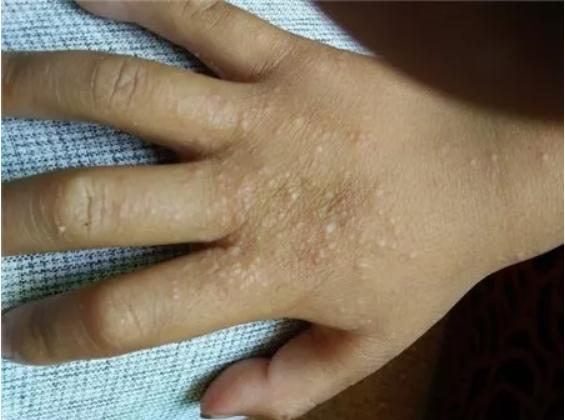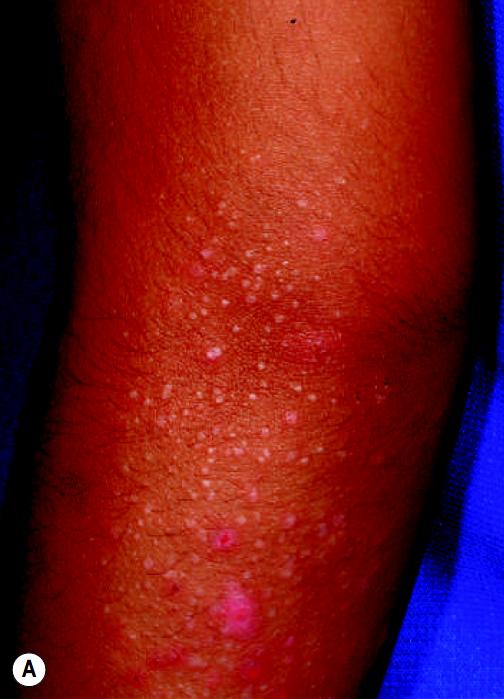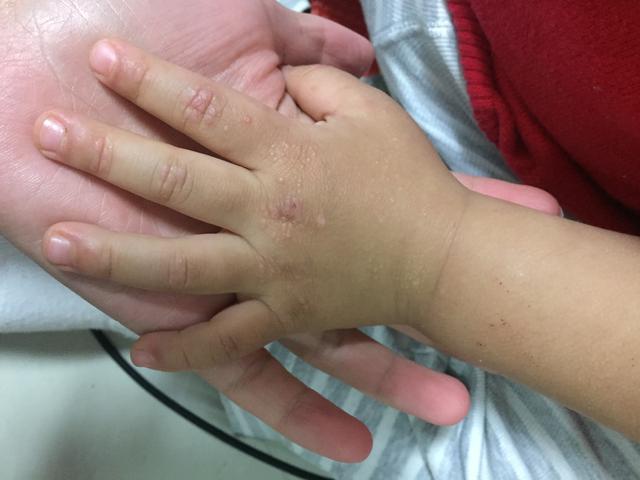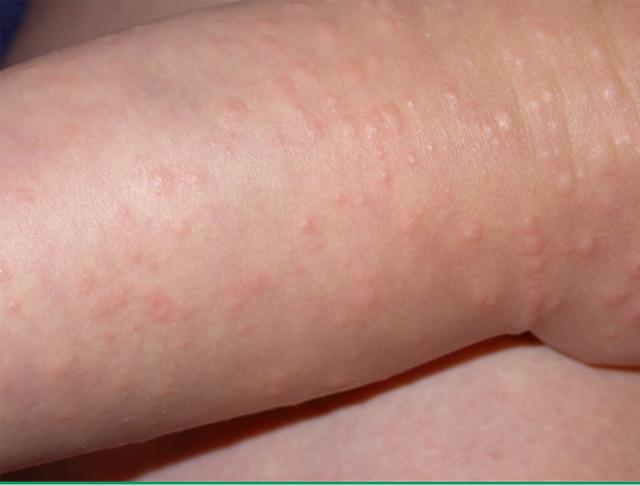Sandy dermatitis
OVERVIEW
What is sandbox dermatitis?
Sandbox dermatitis, also known as frictional lichenoid dermatitis, commonly affects children. Patients may develop multiple flesh-colored lichenoid papules on the skin, such as the back of the hands, which may be accompanied by itching.
This condition is a benign, self-limiting skin disorder and does not require excessive treatment.
Is sandbox dermatitis common?
Children aged 4–12 are more susceptible. It frequently occurs in spring and summer when outdoor activities increase. Boys appear to be more affected, possibly due to their higher participation in outdoor play.
SYMPTOMS
What are the symptoms and manifestations of sand dermatitis?
- The rash mainly occurs on the elbows, knees, and backs of the hands;
- Multiple flesh-colored 1 mm to 2 mm lichenoid papules can be observed, as shown in the image below.
- The degree of itching can range from mild to severe.
- The course of the disease may exceed 3 weeks, usually resolving on its own after 4–8 weeks.


CAUSES
What are the risk factors for sand dermatitis?
Among children with sand dermatitis, about 50% have atopic dermatitis, allergic rhinitis, or asthma. It is also commonly seen during outdoor activities and may be related to sun exposure.
It is traditionally believed to be associated with frequent contact with rough materials during children's activities, such as playing with sand, toys, etc. However, many children have no history of contact with sand or rough granular materials. Therefore, it remains uncertain whether frequent contact with rough objects is a true risk factor.
DIAGNOSIS
What is the diagnostic basis for sand dermatitis?
The diagnosis of sand dermatitis is primarily based on the patient's clinical presentation and can be confirmed after ruling out other suspected conditions. No specific tests are required.
Which skin conditions should sand dermatitis be differentiated from?
Sand dermatitis generally needs to be differentiated from the following common conditions:
- Juvenile dermatomyositis:
The very early skin changes of juvenile dermatomyositis closely resemble those of sand dermatitis. Over time, other typical dermatomyositis rashes (e.g., heliotrope rash, Gottron's papules) and muscle symptoms may appear.
Juvenile dermatomyositis is rare, whereas sand dermatitis is much more common. Therefore, it is usually not a major concern.
Nailfold capillaroscopy can aid in differentiation, as changes in nailfold capillaries may provide clues. If the rash persists and typical dermatomyositis rashes or muscle weakness develop, dermatomyositis should be considered.

- Papular acrodermatitis (Gianotti-Crosti syndrome):
Papular acrodermatitis is secondary to infections such as hepatitis B virus or Epstein-Barr virus, and occasionally enteroviruses.
The face, buttocks, extensor surfaces of the forearms and legs, and feet are the primary affected areas. Trunk lesions are also common but resolve faster and are fewer in number compared to acral lesions.
Papular acrodermatitis typically presents as sudden, symmetrical eruptions of small papules or papulovesicles. The lesions are monomorphic, flat-topped, pink-brown papules or papulovesicles, 1–10 mm in diameter, and may coalesce into plaques.

- Others: Early-stage hand-foot-and-mouth disease, flat warts, molluscum contagiosum, etc., should also be considered in differential diagnosis.
TREATMENT
Which department should I visit for sand dermatitis?
Generally, you can choose pediatric dermatology, pediatrics, or dermatology. If the condition is mild, treatment may not be necessary as this condition is self-limiting.
How should sand dermatitis be treated?
-
If itching occurs, topical corticosteroids can be applied;
-
If there is no significant itching, simple skin moisturizing and sun protection are sufficient.
-
Since it is a self-limiting condition, excessive intervention is unnecessary.
DIET & LIFESTYLE
What should patients with sandy dermatitis pay attention to in daily life?
This is a self-limiting disease. Managing symptoms and improving quality of life are sufficient. Maintain a normal diet, avoid potential risk factors (refer to the "Risk Factors" section), and there is no need for excessive concern.
PREVENTION
How to prevent sand dermatitis?
Currently confirmed preventive measures include: skin moisturizing and sun protection. Reducing contact with rough objects may be beneficial, but more evidence is needed to support this.
Children with a history of atopic dermatitis, allergic rhinitis, and asthma require enhanced prevention. Other children should not be neglected either.
